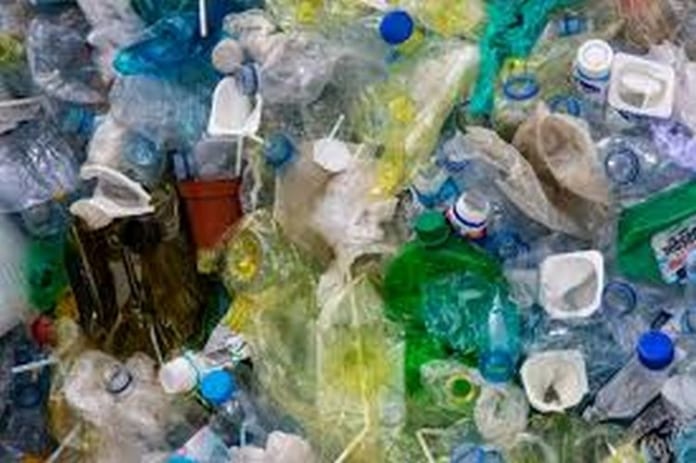Over 500 Tonnes of Plastic Waste Generated by Children’s Lost School Jumpers Every Year in Wales
Research has revealed that children’s lost school jumpers generate 570 tonnes of plastic waste per year in Wales, the equivalent of 35.5 million plastic bottles ending up in landfill.[1] 
School jumpers often contain up to 65 percent polyester, which is a type of plastic. With up to two million school jumpers lost permanently every year in Wales, these alone are contributing significantly to the 40kg plastic waste generated annually by each household in the UK.[2]
What’s more, school uniforms alone don’t show the full extent of Wales’s lost property waste problem. Children in the country permanently lose 14 possessions every year on average, equating to a staggering seven million items lost in Wales per year, many of which have a high plastic content.
The study, which was conducted amongst parents in the UK by leading name label manufacturer My Nametags (https://www.mynametags.com/), found that toys are the most commonly lost item by Welsh children, with over a third of parents (35 percent) stating that their youngsters have mislaid a plaything. This is closely followed by socks (32 percent), school jumpers (28 percent), cuddly toys (20 percent), and stationery (19 percent).
The findings reveal the staggering lost property problem throughout the UK, not just for parents’ pockets but the environment too, with all five of the most commonly lost items containing high proportions of unsustainable materials, including plastic.
In fact, 90 percent of all toys sold are made from plastic.[3] With as many as 51 million plastic toys lost per year across the country, this could be contributing the equivalent of 286 million plastic bottles ending up in landfill in the UK.[4]
Interestingly, almost one in five UK parents admitted that their child most commonly loses reusable plastic water bottles. This demonstrates that even measures intended to reduce children’s impact on the environment could be having an adverse effect.
Commenting on the findings, Dr Sally Beken, Founder of the UK Circular Plastics Network and head of polymers at KTN, said: “By losing garments that could be passed on and ultimately recycled, we are missing an opportunity to make clothing more sustainable. Highlighting the scale of the problem is the first step to remedying it. After littering, incineration and landfill are the worst scenarios for textiles that are no longer useful. There are some novel solutions to the circularity of polymers and synthetic textiles that are starting to develop that will mean if we can capture garments, we can revalue them as starting materials for new plastic products.”
The research also reveals the stark contrast between what we believe happens to lost items and what actually happens. Of those surveyed, 15 percent believe that items will always be returned to them, with less than one in 10 Brits accepting that their lost property is likely to end up in landfill. However, when asked how often lost possessions are returned, parents revealed that 66 percent of the time lost items are never found. This suggests that up to two thirds of these items could be ending up in landfill.
Brits’ attitudes to replacing lost property were also highlighted by the research. A fifth of parents admitted to replacing lost items as soon as possible, even if that means using online shopping with overnight shipping. This approach adds to the environmental impact of lost property, particularly when considering the additional emissions generated by delivery. Interestingly, only a third of parents said they currently take measures to reduce future lost property, such as using name labels.
Lars B. Andersen, Managing Director at My Nametags, comments: “Children’s lost property is a significant problem, not just for parents who have to replace the lost items, but for the environment too. As a nation, we know there is a climate crisis, and everyone is doing their bit to reduce their impact on the planet, whether that is eating less meat, reducing use of single-use plastics, or installing energy-efficient light bulbs. However, there remains a gap in our knowledge about the impact that lost property could be having on the environment.
“Clothing is a key example of this. Many fabrics used to create children’s clothes and uniforms include synthetic fibres made from plastic. As a result, when these items are unnecessarily lost, it can have a big impact on the planet. To help parents reduce the environmental impact of lost items, we have put together a list of top tips for preventing lost property and ingenious hacks to make clothing last longer.”
Top tips for preventing lost items:
- Create designated compartments in your children’s bag – encouraging them to pack everything away in the same place and repeating the same routine each day will make it easier for them to remember
- Keep small objects in a pocket or purse with a zip
- Use name labels – especially for items that are regularly taken out of the home to school or nursery, labelling items makes it easier for people to return them if they become lost. Also consider adding a phone number as well as a name
- Do a double – before leaving the house, school or anywhere else, get your child in the habit of double-checking that they have everything, it’s easier to find lost items when they first go missing than later down the line
- Attach a smart finder – for more valuable possessions, consider attaching a smart finder which will track your item wherever it goes
To view the full list of tips, visit https://www.mynametags.com/blog/2021/08/top-tips-to-help-your-child-stop-losing-things/.
Top tips for making clothing last longer:
- Quality over quantity – where possible, opt for a few quality pieces over lots of low-cost items. Cheaper garments tend to be made from synthetic fabrics which will wear much quicker and have a negative impact on the environment
- Don’t overfill the washing machine – overfilling a washing machine not only means clothes won’t wash properly but they will also rub against each other more which can cause damage and fading
- Reduce the amount of fabric detergent – Using large amounts of detergent can increase the fragility of some fabrics, such as Lycra, and can cause them to become stiff
- Wash dark clothing inside out – to avoid dark clothing fading, wash them inside out to preserve the colour. This also works for graphic t-shirts to prevent the print from cracking and fading
- Fold instead of hang – hanging heavy items like woollen jumpers can cause the fabric to stretch and create misshapen clothing
To view the full list of tips, visit https://www.mynametags.com/blog/2021/08/top-tips-for-making-clothing-last-longer/.

| [donate]
| Help keep news FREE for our readersSupporting your local community newspaper/online news outlet is crucial now more than ever. If you believe in independent journalism,then consider making a valuable contribution by making a one-time or monthly donation. We operate in rural areas where providing unbiased news can be challenging. |



















